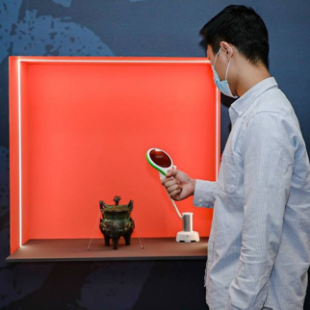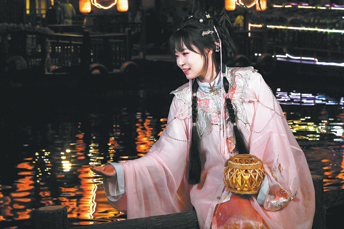Museums key to nation's overall growth


Chinese museums have made a leap in their development over the past few years, but further reform is required in order to give them a more prominent role in the nation's overall development, according to a document published on Monday.
After three years of preparatory work, nine ministry-level administrations jointly released the document, which offers guidelines on promoting reform and development of the sector.
According to the guidelines, by 2035, the nation will have "a fully fledged museum system with Chinese characteristics that has well-developed social functions".
In addition, by that time, "China will basically establish itself as one of the world's major countries in terms of museums, in order to contribute China's wisdom and solutions to global museum development".
The document aims to strengthen coordination of museum development among different levels of institutions, regions, and types to give China's museum sector greater diversity.
"Our museums still face the problem of unbalanced development, and the system needs to be optimized," Guan Qiang, deputy director of the National Cultural Heritage Administration, said at a news conference held on Tuesday by the State Council Information Office.
"As the operation of national and provincial-level museums is basically in good shape, our next focus will be on city and county-level venues," he said, adding that more support will be given to museums in rural areas, local communities and frontier areas.
Improvement of the collection and acquisition system, conservation capacity and technical support were also emphasized in the document, as well as the role of museums in public education and international communication.
Significant surge
Statistics released by the administration on May 18, which was International Museum Day, showed that 5,788 museums-including 5,214 with free access-had been registered in China by the end of 2020, an increase of about 23 percent compared with 2015.
As a result, China had the fourth-largest number of museums in the world after the United States, Germany and Japan.
"But we need to transit from quantity-based to quality-based growth," Guan said.
About 10 to 15 Chinese museums will become the focus of the reform process and will be built into "world-class museums" leading the sector's development, according to the document.
Digitized information on museums' collections will be introduced into the country's general database of education resources in order to better serve students, while virtual exhibitions will be more widely promoted in public spaces in urban and rural areas.
"Chinese museums will more frequently enter the international arena due to the expertise of exhibition curators with a global perspective," said Luo Jing, a department director with the administration in charge of museum development.
"Long-term exchange exhibitions and touring exhibitions will help us better display the world's civilizations (in China)," Luo said.
The department director added that the guiding mindset of exchange exhibitions will be developed in the future.





































